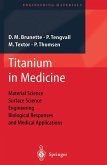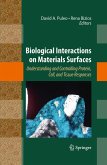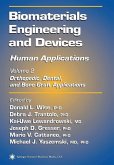This book is intended as a general introduction to the uses of artificial materials in the human body for the purposes of aiding healing, correcting deformities, and restoring lost function. It is an outgrowth of an undergraduate course for senior students in biomedical engineering, and it is offered as a text to be used in such courses. Topics include biocompatibility, techniques to minimize cor rosion or other degradation of implant materials, principles of materials science as it relates to the use of materials in the body, and specific uses of materials in various tissues and organs. It is expected that the student will have successively completed elementary courses in the mechanics of deformable bodies and in anatomy and physiology, and preferably also an introductory course in materials science prior to undertaking a course in biomaterials. Many quantitative examples are included as exercises for the engineering student. We recognize that many of these involve unrealistic simplifications and are limited to simple mechanical or chemical aspects of the implant problem. We offer as an apology the fact that biomaterials engineering is still to a great extent an empirical discipline that is complicated by many unknowns associated with the human body. In recognition of that fact, we have endeavored to describe both the successes and the failures in the use of materials in the human body. Also included are many photographs and illustrations of implants and devices as an aid to visualization.
Dieser Download kann aus rechtlichen Gründen nur mit Rechnungsadresse in A, B, BG, CY, CZ, D, DK, EW, E, FIN, F, GR, HR, H, IRL, I, LT, L, LR, M, NL, PL, P, R, S, SLO, SK ausgeliefert werden.









